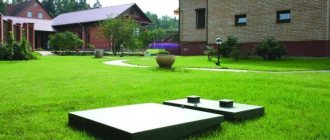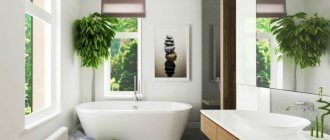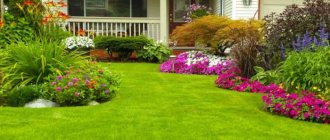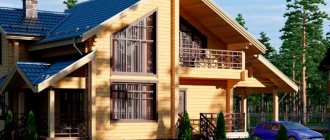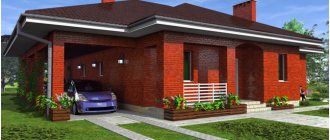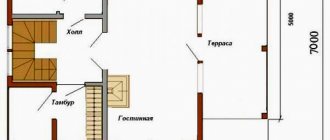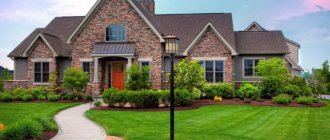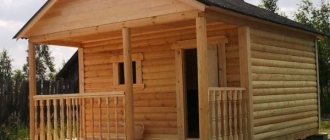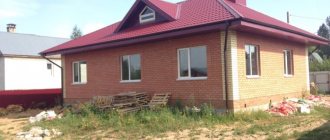This will be possible subject to knowledge of zoning principles and compliance with state standards in the field of urban planning and fire safety gaps from the border.
This article provides advice on how to plan a plot of land of 12 acres and correctly place all construction objects and green areas.
Where to start designing?
It will not be possible to carry out correct zoning without drawing up a diagram and plan. To do this, they take the existing memory layout on a certain scale, transfer its boundaries, determine its shape and the objects that are planned to be placed on it in accordance with the functional purpose.
After this, these objects are cut out to scale from colored paper and placed on the diagram, taking into account the minimum distances from boundaries and red lines in accordance with the requirements of building, sanitary and fire regulations.
How to execute the scheme correctly?
Zoning is the most important planning stage . In fact, there can be many functional zones on a land plot, but for simplicity, they are all grouped into 4 groups:
- Residential building 10%.
- Outbuildings, garage and bathhouse - 10%.
- Gardening area - 65%.
- Recreation area with a sports or children's playground, swimming pool and artificial pond -15%.
In order to correctly position objects on the plan, you will need to take into account:
- form of memory;
- cardinal directions;
- compass rose;
- terrain - hills and lowlands, natural bodies of water and existing trees and shrubs;
- depth of groundwater.
After complete information characterizing the memory has been collected, we begin to draw objects on the diagram. To do this, trace the outlines of paper objects with a pencil. On such a plot of 12 acres you can place:
- residential building with a detached or built-in garage;
- car parking;
- livestock shed and woodshed;
- bathhouse or guest house;
- gazebo;
- water;
- recreation area;
- sports or children's playground;
- well;
- compost pit.
Site planning schemes
A territory of adequate scale must be harmoniously filled. Design will eliminate thoughtless clutter and make the site a full-fledged country estate. Schemes in landscape design will help to correctly position buildings, taking into account the technical characteristics of the space.
Layout of an irregularly shaped site Source www.greenmich.ru
Placement of objects in areas of different shapes
After choosing the scheme and type of zoning, the location of the house, the central entrance and the garage, you can begin to place objects. In principle, plots of 12 acres can accommodate all the necessary residential and non-residential outbuildings, as well as a well, a garage, a bathhouse and a gazebo. The specific placement will depend on the shape of the charger, the direction of the light and the wind potential .
Rectangular
The most preferred plot of 12 acres has a size of 30x40m. This form is very convenient for planning and makes it possible to place long paths connecting all its areas.
A residential building can have a plan area of 120 m2; it should be placed in the northern part, since there is more shade there.
The windows of living rooms should face east and west . In the south, a veranda is being built that will protect the interior from bright sunlight.
One of the best places for garden beds is in the south, so they are not shaded by buildings or garden trees. The position of vegetable beds largely depends on the soil. If it is clayey, then they are located from north to south.
For sandy soil, the optimal direction is from east to west, since in this case the drying of the soil slows down. To make them look more harmonious, they are given a strict rectangular shape.
Important! If the terrain of the site has a slope and most of it is located in a lowland, then the house is located at the highest elevation to prevent flooding. If it is located on a long southern slope, a residential building is built on a hill, and on a northern slope - in the middle part, facing west.
Square
It is recommended to enrich a square plot with asymmetrical design . Initially, many people find this form boring, but nevertheless it makes it possible to use numerous options. To save central space, it is recommended to locate a residential building at one of the edges.
Along the perimeter there are paths, the length of which is laid out with flower beds. Asymmetrical paths and round decorative elements, which can create a much more harmonious space, effectively diversify design solutions. These primarily include gazebos, flower beds of a certain shape, and round lawns.
Triangular
A residential building should occupy no more than 10% of the total area .
Therefore, the house should have a size of 120 m2. It is located on the south side, where the central entrance for transport and the main road are located. Outbuildings are being built along the northern border of the site.
Paths for such storage facilities are arranged parallel to the borders. Most of the central territory is allocated for a recreation area. The terrace from the north should be equipped with wind protection. Gazebos are installed in a recreation area hidden from prying eyes. It can be hidden behind decorative elements or decorative hedges.
Round
For this type, a radial arrangement of zones is used , the house is located in a depth not reaching 3 m from the boundaries, with a northern location for non-residential premises and a southern location for residential premises. The central entrance to the house is also located here.
Fruit trees are located along the fence, also in a circle. The recreation area is divided in the center with a pond. Paths connect all objects in a circle. The beds are located in the western, unshaded part of the plot.
Polygonal
When diagonally zoning, wide paths are used. This will allow you to place the entrance to the house away from the street, and the adjacent area will be private, and you can separate the zones with a screen of bushes.
On such a site, it will be necessary to allocate twice as much land for a recreation area than for household and gardening . It will not be possible to build outbuildings in full; you will have to choose either a bathhouse or a barn in order to ensure minimum fire and sanitary distances.
On the windward side, wind-resistant trees are planted tightly, and in places with high wind loads, such planting is done on all sides to protect the soil.
Examples of landscape design on 10 acres
Landscape design is becoming increasingly popular in our lives. And, if initially this was the privilege of wealthy people, now every person can create a landscape design project for a plot of 10 acres.
What does a landscape design project consist of? To begin with, a project is created, it indicates all the features of the area and the location of the project on the territory. In this case, you need to correctly create a project:
- firstly, it will hide the shortcomings of the site;
- secondly, it will allow you to create a beautiful view from the window, making a beautiful accent on the territory from which the viewer will receive aesthetic pleasure. For examples of landscape design on 10 acres, see photos:
Space zoning
The layout of the house can be street, when the house is placed on the street border of the site, central - in the center and recessed, at the end of the building, in relation to the central passage. Experts believe that the most promising is the central location of the house . In this case, symmetrical placement of objects can be used, and the house will be protected from street noise and dust.
They try to remove outbuildings: a summer kitchen, garage, shed, or woodshed away from visitors, for example, place them behind a garden area or decorate them with floral decorative elements or small fences. They must be connected to each other into a single integrated system using paved paths.
Utility premises are located taking into account minimal fire and sanitary gaps:
- yard toilet in relation to the drinking well and the house - 8 m;
- well with drinking water in relation to the compost pit - 8 m;
- bathhouse to the red line - 5 m, to a residential building - 8 m;
- garage, built into the house on the north side or detached at a distance of 3 m to the border;
- barn with animals 15 m from a residential building;
- boiler room or barbecue taking into account the wind so that smoke does not enter the room - 5m.
Most of the space is allocated to the vegetable garden and garden, but when allocating space for this zone, it is important to take into account the wind rose and the location of the cardinal points; the vegetable garden should preferably be located in the southern part of the site, tall trees in the northern side to protect it from cold winds.
This zone should go well with the recreation area, flower beds and artificial ponds. Restrictions on minimum gaps for trees - tall ones should not be located closer than 4 m from the boundaries, and medium ones - 2 m, so as not to obscure the neighboring property.
The recreation area is designed as a central element of the landscaping project . Usually it is located right in front of the house. In the center of it, it is recommended to place a gazebo, which can be either a summer one made of wood or a permanent one made of brick; it can have an internal stove, which will allow you to relax outside during the cold and rainy season.
Note! The playground should be located next to the house and have a good view from the windows of the house. Its content depends on the age of the children and can be combined with a sports ground.
Places for rest
Rest is a very important part. All site designs include a recreation area. It could be a barbecue - where you cook for your family.
The pool can be inflatable, frame, or dug in the ground. Each of them has pros and cons. Inflatable quickly deteriorates, but it is safe for children
The second thing you can do is a swimming pool. The pool can be inflatable, frame, or dug in the ground. Each of them has pros and cons. The inflatable deteriorates quickly, but it is safe for children.
The frame one is usually quite high, not safe for children, but it folds up very easily. A dug pool will serve you for a very long time, but it is difficult to wash and drain, and it also takes a long time to heat up.
The landscape design of the site can be created using decorative sculptures, garden furniture and much more. Sculptures come in a variety of styles, so you can decorate any area with them.
How and where to place a private house?
There are several options for placing the house: urban - 3 m from the fence running along the street, central and deep in the yard. The last two are most preferable, since they protect the house from street noise.
More specifically, the location of the house and its shape in plan depends on the shape of the site:
- A rectangle, a universal shape, the house can be located according to all three standard schemes and have any shape in plan; the location of the house diagonally in the western corner of the building looks very good.
- Square, most owners use an asymmetrical arrangement of objects near the house; the house can have either a central or diagonal location in the northeast corner of the building.
- Circle, only diagonal placement in the depth of the memory and radial zoning.
- Triangle, diagonal location of the house in the depths of the northern part of the plot, so that the shadow does not fall on the garden.
- Polygon, diagonal central placement of the house, other objects are placed asymmetrically.
Arrangement of other buildings
The garage is located near the central entrance, if conditions on the north side allow, and it is better to build it built into the basement of the house, in which case there will be more free space for a vegetable garden or recreation area.
Important! When placing a garage, you need to take into account the gap to the red line - 5 m, the boundaries of the site - 1 m and the garden at least 3 m, since a running engine does not contribute to the growth of plants.
The bathhouse has restrictions on fire and sanitary gaps - at least 8 m from the house, 5 m from the red line and 1 m from the boundaries of the plot. When planning, the wind rose is taken into account so that smoke from the chimney does not enter the living quarters and recreation area, as well as the presence of utility networks: water, sewerage and electrical networks.
More specifically, the location of these objects depends on the shape of the land plot and its topography:
Rectangular . The bathhouse and the garage are located asymmetrically to the house, the garage is in the northeast adjacent to the house, and the bathhouse is in the southwest, 8 m away from the gazebo located in the center of the recreation area.- Square . When placed diagonally, the bathhouse is located on the western side opposite the house, 1 m from the fence and 8 m from the gazebo, which is located in the center of the allotment in the recreation area, a garage built into the house.
- Circle . The bathhouse is opposite the house, 1 m from the border circumference, in the southern part of the building, at the northern central entrance, the garage is built into the basement.
- Polygon . The bathhouse is opposite the house, at the southern border of the property, between them there is a recreation area, along the common side from the west in the corner there is a garden with a gazebo, the distance between them is no more than 8 m, and on the east side there is a garage and the central entrance.
Features for plants
This zone occupies most of the area from 50 to 60%. Usually it is arranged in a “dead” part of the plant, away from the street, so that dust does not settle on the leaves and exhaust gases do not poison the fruits.
The choice of trees must be taken very responsibly , they bear fruit from 30 to 50 years, and mistakes made during planting can be detected no earlier than 7 years later, after which it will be quite difficult, and sometimes impossible, to correct them.
Very often, site owners who do not want to care for their garden exclude it from zoning. As an alternative, leave small beds for greenery and flower beds.
Garden
The norm for planting trees for a garden is 3 acres:
- 5-6 apple trees;
- 1 pear;
- two cherries, plums and sweet cherries;
- 2 peaches for the southern regions;
- 5 bushes of black and red currants;
- 10 raspberry bushes;
- 3 gooseberry bushes;
- 250 strawberry bushes.
It is useful to place a couple of Christmas trees and thujas on the site. Over the years they will stretch out and create shade. In addition, there will be a pleasant pine aroma around the house all year round.
Helpful information . It is not recommended to plant trees extremely close to buildings, since over time, as the root system develops, it can damage the foundation. Bushes should be planted around the perimeter of the “green” zone or in the center as symbolic boundaries.
Flowerbeds
Flower beds and flower beds are arranged to decorate recreation areas and the central entrance to the house. They are somewhat different from each other. So, a flower bed, as a rule, has the correct shape and a fence in the form of a border, but a flower garden does not have a clear boundary and can be of any shape, even the most bizarre. Sometimes it is placed on lawns among bushes and trees.
To choose a location, you need to take into account not only the aesthetic component, but also the condition of the soil and shading . In order for the flower beds to bloom throughout the warm season of the year, you need to choose the right perennial flowers. Spring low-growing varieties, such as hyacinths and snowdrops, are planted in the foreground, tulips in the middle, summer and autumn flowers in the background.
Garden
For it you need to allocate the sunniest place in the southern area. In order for a garden to produce good harvests, it must meet certain requirements:
- Carrying out agrotechnical activities and applying fertilizers.
- To create air permeability of the soil, for this purpose various types of disintegrants are added, from straw chaff to river sand.
- Organizing good humidity conditions: excess water is removed through drainage or added during irrigation.
- Organization of wind protection of the site.
The total area of the garden is divided into several sections, while the main crops that require a larger planting area are planted in one area, and the greens are placed closer to the paths to make it easier to cut.
Important! It is not allowed to plant vegetables in the dark rows of the garden, where there is high competition for water, and the products may also be contaminated with poisons used for garden trees.
Reservoirs
According to the requirements of SNiP, it is allowed to place artificial reservoirs on the site : for extinguishing fires and accumulation pits for irrigation.
However, the construction of such a facility cannot violate the rights of neighbors and sanitary rules. Therefore, such an object is created according to a project in which the water-filled source and the place of water discharge must be indicated.
When arranging an artificial reservoir on a landfill, you will need to maintain a minimum distance to buildings - 3 m.
STYLES
There are several styles that are widely used in site planning:
- Landscape. This style is suitable for those who do not like strict symmetry and clear rules. There are no right angles or strict lines here - only your imagination!
- Regular. This is where symmetry is absolutely king. If your site is perfectly flat, without hills or depressions, then the regular style is optimal for it.
- Mixed. As you can easily guess, this style combines the features of the previous two.
When choosing a design style, you should also take into account the area of the site
Layout of a plot of 12 acres or less
Planning a small plot of land, surprisingly, is more labor-intensive and requires a more thoughtful and careful approach than planning a plot larger than 12 acres. This is due to the obvious need to thoughtfully use every centimeter of space. For this, it is best if you have at hand a pre-compiled list listing everything that you would like to fit on the site. After which this list can be used when planning the site.
Does everything fit without problems? Great, then a couple more tips. Do not locate utility rooms too close to the house - maintain distance. It is better to locate utility rooms in the yard so that they visually increase the area of the site, rather than reduce it.
Layout of a plot of more than 12 acres
Drawing up a plan for a site with an area of over 12 acres may include several outbuildings and various elements of landscape design. The basic principles are the same as when planning smaller areas. The only difference is that there are more opportunities to expand a particular area - for a flower bed, a swimming pool, and so on.
Development of a project for a country plot
Dacha construction differs from ordinary home ownership in that it is mainly designed for maintaining a vegetable garden, gardening is carried out to a minimum extent, a house for seasonal residence and outbuildings for housekeeping are built on it.
Features of zoning allotment for a dacha:
- In the north there are outbuildings, a toilet and a summer shower or bathhouse, a summer kitchen and a garage.
- In the south there is a vegetable garden, the central entrance to the house.
- In the east there is a sports zone and a recreation area.
- To the west is a garage.
- Paths must be durable and connect all outbuildings and areas.
- Parking should be located in front of the house from the central entrance.
Photo of designing a summer cottage:
Paths
When thinking about how to lay paths, focus on what exactly you need access to. The route can be an “excursion” - in this case it passes by the most beautiful places. The main path should be characterized by the absence of sharp turns and smoothness. Among flowers and trees, the path may be more winding, because it is mainly intended for leisurely walks.
There should be enough space for two people to fit on the road. The best option is a width of one to one and a half meters. Make slight slopes on both sides, in this case there will be no puddles on the path. Materials must be aesthetically pleasing, durable, and resistant to high and low temperatures.
Possible mistakes
The main reason for numerous violations during the development of such a site is spontaneous construction and the absence of a preliminary zoning scheme.
This creates not only an ugly design and causes a lot of inconvenience in the process of life, but also becomes the cause of numerous legal disputes with neighbors and regulatory authorities due to violations of the minimum construction, fire and sanitary gaps between objects, boundaries and red lines.
Most common mistakes:
- Preliminary drawing of objects on the diagram is not performed.
- When zoning, the wind rose, relief and shape of the plot are not taken into account.
- When locating objects, the groundwater level is not taken into account.
- The rectangular land plot is zoned in violation of the principle of the northern placement of the house; the garage and bathhouse are built in violation of the minimum gaps to the boundaries and the red line.
- Square charger - incorrect location of the house with the living rooms exiting to the north, the bathhouse is located close to the house, during operation smoke enters the living rooms of the house.
- Triangular landfill - incorrect placement of the house in a corner, in a low area, sanitary and fire breaks are not maintained, garden trees are incorrectly placed on the south side, the landfill is open to cold winds.
- A round plot is an incorrect placement of objects, it is made in a circle, and not asymmetrically diagonally, the minimum distances to the borders and the red line are not maintained, the recreation area and garden are placed chaotically, and not according to a radial principle.
- Polygonal building - the buildings are built without taking into account the relief, real problems are created when moving between objects, the wooden house is located closer than 15 m to the bathhouse.
We place the main building
Before starting construction of the main building, it is necessary to study the rules and regulations for the location of the building relative to the boundaries of the site and neighbors. Decide on the type of foundation and shape of the house. A plot of 10 acres allows you to design a house with a veranda or porch.
You can use ready-made house design projects or contact specialized organizations.
If you decide to build a brick house, then you must maintain a distance of up to 6 meters between your neighbor’s house and yours.
A wooden frame house must be 10 meters away from the neighbor’s, as required by fire safety standards. There should be a distance of 8 meters between a wooden and brick house.
All this must be displayed on your version of the layout of the summer cottage.
Example with photo design with a house, bathhouse, garage
If such a plot stretches from East to West, the terrain is flat, the groundwater is below 1.5 m, then zoning is recommended to be done with a central location of the house with a slight offset to the northern border of the plot.
The terrace of the house is adjacent to the south-east side. The garage is adjacent to the northern wall of the house, behind the garage there is a parking lot. The northern part of the walls is protected from the wind by fir trees.
The bathhouse is located closer to the corner of the building in the northeast direction. Between the bathhouse and the eastern border of the allotment there is a utility yard with outbuildings.
At the opposite border there is a gazebo and barbecue. The recreation area extends from the bathhouse to the gazebo. The garden and vegetable garden area is located along the southern border of the property.
First stage
Layout of a plot of 4 acres
First of all, you need to understand what you would like to see on your land. Usually these are mandatory functional areas: a residential building, a garden area, a recreation area, and outbuildings. Sometimes owners dream of a swimming pool or an alpine slide.
Then you need to take a plan of your site from the Bureau of Technical Inventory (BTI) and redraw it on graph paper (scale 1:100). Mark the territory using 1x1 cm squares as a standard unit (square = 1 m² of area). Draw everything you would like to see on the site: a house, a gazebo, a swimming pool, an orchard, etc.
It doesn't matter that your plan is approximate. A specialist will help you work out the details with greater precision if you want
This plan is a summary of what you ultimately want. There are also landscape computer programs that visualize your ideas.
Harmonious combination of all zones
Despite the fact that 1200 square meters is a fairly large area, all divisions into zones must be harmoniously combined. This does not mean that absolutely the entire area must be done in a particular style. But the transition from one style to another should be concise and complete. Most adherents of the natural style have simplified the classic forms and believe that it is the natural style that allows you to relax and feel comfortable in the best way.
Plants are located throughout the site, harmoniously combining their colors. The remaining soil from the dug reservoir should not be taken away; it is better to use it for an alpine hill. And sow the flat free space with lawn grass.
Flowerbed near the house
Flower beds add a unique, special flavor to the design. A variety of shapes (round, rectangular, ribbon) and sizes will add their own flavor to the overall landscape. The main thing is to combine them correctly.
Topiary - unusually trimmed shrubs
Important little things! Decoratively trimmed bushes and trees formed into various shapes: balls, pyramids, triangles, etc. will add mystery and spatial exoticism. Lawns and lawns decorated with such exotic plantings look very impressive.
Combined paths paved from different materials will give a special uniqueness to absolutely any style.
Original combinations of wood and stone, wooden sections and crushed stone, concrete and pebbles will decorate even the simplest landscape.
Small architectural forms
And elements of small architecture that are quite popular today will positively complement unpretentious paths and bring sophistication to the layout of landscape design. These can be all kinds of sculptures, fountains and fountains, lanterns, fungi, etc. They go very well with water elements such as streams, springs, waterfalls, small ponds.
With 1200 square meters at your disposal, allow your soul to realize its most wonderful ideas and plans, bringing pleasure to yourself, your family and those around you!
The main factors in determining the final fence price
1 weave is how many meters in length and width.
The cost of the fence is primarily influenced by:
- costs of materials (concrete, brick, rolled metal, pipe, profile, accessories);
- fence dimensions (length and height);
- installation method (presence of a foundation or spot pouring, type of supports, cost of installation services).
It is important to determine in advance whether it will be necessary to pour a foundation for the fence or whether you can only dig in supports and reinforce them with concrete. The owner of a plot of land in a forested area, marked for the first time, will not be able to erect a strong house and a fence until he levels the landscape. All these aspects “come to the surface” during a geodetic survey, which is recommended to precede any construction on the ground
All these aspects “come to the surface” during a geodetic survey, which is recommended to precede any construction on the ground.
It is difficult for an amateur to take into account such a number of nuances. That’s why it’s really worth contacting specialized companies to build a high-quality fence. Professionals will do everything correctly, using sophisticated technology, and will not conduct experiments on your site.
One hundred square meters of land is how many meters around the perimeter: let’s analyze it in detail
How many meters is this around the perimeter? This information interests the gardener most of all. Before building up and planting the land with plants, you need to carefully plan where the garden house will be located, outbuildings, where garden paths will lie. You need to know everything exactly, 8 acres is how many square meters, what is the perimeter? In the documents, the size of the allocated land is indicated in square meters. A hundred square meters is popularly called a square with one side equal to 10 m. That is, the dacha plot in question contains 8 such squares or 800 sq.m.
Square plots are rare; more often they have a rectangular shape, because from the gardener’s point of view, it is better for the garden to be a little elongated. Then the dacha has a perspective, a view into the distance. Particularly successful are areas where the sides are longer than the front and back. However, in order to make it convenient to build and plant, a dedicated summer cottage site should not be too elongated. The optimal aspect ratio is 1:1.5.
Research on site and in papers
A 6-acre piece does not create difficulties in everything. Due to its small size, the natural conditions within its boundaries can be considered constant. Therefore, expensive geological surveys on site will not be necessary, unless the land documents indicate that development is possible only based on the results of geology. The case is not so rare - areas with weak and/or unstable soil are sold very cheaply. Therefore, if you are just planning to acquire land for development, be sure to check the papers for it - what about the geology? If everything is clear, preliminary investigations include:
- On-site verification of the plan diagram to scale with orientation to the cardinal points. There is no such thing - milestones, tape measure and surveying compass, compass, independent surveying and drawing.
- On-site determination of the direction, nature and magnitude of the ground slope. Tools - milestones, mooring cord, building level, tape measure.
- Determination of the direction of prevailing winds separately in the warm and cold seasons. Method - look on the Internet for a climate map of a given area and/or a wind rose for it. Check with your local weather service. They are required to provide information free of charge.
- Determination of the direction and magnitude of underground flow on the site. Information should be available from the board of the partnership or village, from the owner of the area and from the construction department of the municipality. They should also give it free of charge: the cost of this information is always included in the state duty and commission when purchasing land for development.
Preparatory work
Before you begin drawing up a future site plan, you need to decide on the terrain itself, the nature of the relief, the shape of the land, the presence of any buildings, as well as other features of the area. For example, in rural areas there are a large number of streams and reservoirs, if one is present on your site, then you can use it correctly.
Pay attention to several features of the location of the dacha:
lowland - hill; presence or absence of a water source; wooded area - steppe.
Quite often it is necessary to add or remove soil, make blind areas for walls, and also make organized drains. Only with proper placement of buildings on the site can you make maximum use of the dacha plot and highlight all the zones.
To ensure that all the preparatory work is done correctly, it is best to assess the space and start from the ground.
- Relief: hilly, flat, with ravines or mountains. The layout of utility lines will depend on this indicator.
- Soil: clayey, humus, sandy. If you plan to equip a vegetable garden, you should increase the soil fertility by applying fertilizers. The set of plants for the garden and flower beds will depend on the acidity level.
- Shape and size of the territory: square, rectangular and elongated.
- Groundwater: If the level is high enough, you should consider draining the water.
- Climatic conditions.
- Illumination.
